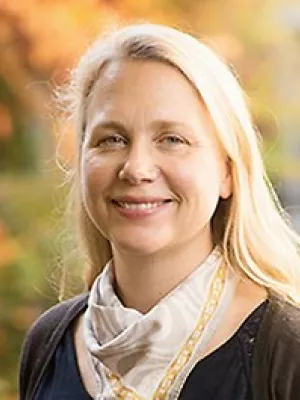
Helena Filipsson
Professor

Anthropogenic and climatic impacts on a coastal environment in the Baltic Sea over the last 1000 years
Författare
Summary, in English
Coastal environments have experienced large ecological changes as a result of human activities over the last 100–200 years. To understand the severity and potential consequences of such changes, paleoenvironmental records provide important contextual information. The Baltic Sea coastal zone is naturally a vulnerable system and subject to significant human-induced impacts. To put the recent environmental degradation in the Baltic coastal zone into a long-term perspective, and to assess the natural and anthropogenic drivers of environmental change, we present sedimentary records covering the last 1000 years obtained from a coastal inlet (Gåsfjärden) and a nearby lake (Lake Storsjön) in Sweden. We investigate the links between a pollen-based land cover reconstruction from Lake Storsjön and paleoenvironmental variables from Gåsfjärden itself, including diatom assemblages, organic carbon (C) and nitrogen (N) contents, stable C and N isotopic ratios, and biogenic silica contents. The Lake Storsjön record shows that regional land use was characterized by small-scale agricultural activity between 900 and 1400 CE, which slightly intensified between 1400 and 1800 CE. Substantial expansion of cropland was observed between 1800 and 1950 CE, before afforestation between 1950 and 2010 CE. From the Gåsfjärden record, prior to 1800 CE, relatively minor changes in the diatom and geochemical proxies were found. The onset of cultural eutrophication in Gåsfjärden can be traced to the 1800s and intensified land use is identified as the main driver. Anthropogenic activities in the 20th century have caused unprecedented ecosystem changes in the coastal inlet, as reflected in the diatom composition and geochemical proxies.
Avdelning/ar
- Kvartärgeologi
- MERGE: ModElling the Regional and Global Earth System
- Institutionen för naturgeografi och ekosystemvetenskap
- BECC: Biodiversity and Ecosystem services in a Changing Climate
Publiceringsår
2018-03-01
Språk
Engelska
Sidor
66-79
Publikation/Tidskrift/Serie
Anthropocene
Volym
21
Dokumenttyp
Artikel i tidskrift
Förlag
Elsevier
Ämne
- Geology
Nyckelord
- Baltic Sea
- Coastal area
- Eutrophication
- Hypoxia
- Land use
- Mining
Status
Published
Projekt
- Land-Sea Interactions over the last 6000 years (LSI6K): Impact of land-use change on terrestrial carbon pools in the Baltic Sea catchment, and their effect on aquatic ecosystems
ISBN/ISSN/Övrigt
- ISSN: 2213-3054

